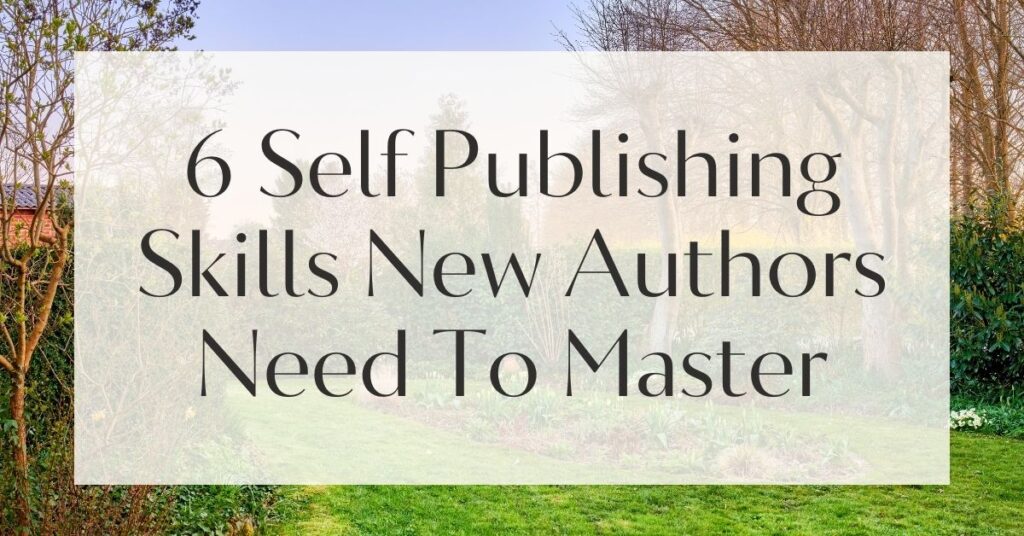Imagine holding your book, a tangible representation of your creativity and hard work. The world of self-publishing offers this dream to many aspiring authors, but it’s not just about putting words on a page.
It’s about mastering a set of self publishing skills that will transform your manuscript into a book that stands out on both digital and physical shelves. Let’s delve into these essential skills that can unlock your potential as a new author.
Understanding Self-Publishing Skills
Embarking on a self-publishing journey is akin to setting sail on uncharted waters. With the right skills, you can navigate this vast ocean with confidence and purpose.
The Importance of Self-Publishing Skills for New Authors
For new authors, self-publishing skills are not just beneficial; they’re crucial. These skills allow you to maintain creative control while ensuring your book meets industry standards.
Each skill is a stepping stone toward success, from writing and editing to marketing and distribution. Mastering these skills enhances your book’s quality and boosts your confidence in your publishing journey.
No marketing platform? No social following? No problem!
Publisher Rocket helps you market your debut novel like a pro.
It’s a gamechanger for debut authors – try it today!


Common Misconceptions About Self-Publishing
Many assume that self-publishing is a shortcut to fame and fortune. However, this path requires dedication, resilience, and a willingness to learn.
Contrary to popular belief, self-publishing isn’t about cutting corners; it’s about honing your craft and strategically positioning your book in the market. Understanding these misconceptions helps set realistic expectations and prepares you for the challenges ahead.
Skill #1: Mastering the Writing Process
The foundation of any successful book lies in its writing. As an author, your voice and style are your unique selling points.
Finding Your Unique Voice and Style
Your voice is what sets you apart from other writers. It’s the distinctive tone and style that readers connect with. To find your voice, experiment with different writing styles and genres.
Read widely and draw inspiration from authors you admire. Remember, your voice is your brand, which keeps readers coming back for more.
To hone your unique writing style, consider keeping a journal where you explore different tones and voices. This practice can help you discover the nuances that define your voice.

Creating Compelling Content That Resonates
Writing isn’t just about stringing words together; it’s about telling a story that resonates with readers. Whether you’re crafting fiction or nonfiction, focus on creating characters and narratives that evoke emotion.
Use descriptive language to paint vivid pictures in your readers’ minds. Remember, compelling content turns a casual reader into a devoted fan.
Skill #2: Navigating the Editing Journey
Editing is where the magic happens. It’s the process of refining your manuscript into a polished piece of art.
Self-Editing Techniques for Beginners
Before sending your manuscript to a professional editor, it’s crucial to self-edit. Start by reading your work aloud to catch awkward phrasing and inconsistencies.
Use tools like Grammarly to spot grammatical errors. Take breaks between edits to approach your work with fresh eyes. Self-editing is a vital step in ensuring your manuscript is as strong as possible before professional intervention.
Working with Professional Editors
Professional editors are your allies in the publishing process. They bring a fresh perspective and expert insight to your work. When choosing an editor, look for someone who understands your genre and vision.
A good editor will enhance your manuscript without compromising your voice. Remember, collaboration with an editor is a partnership to make your book the best it can be.
When working with a professional editor, communicate your goals clearly. Providing them with a brief summary of your book’s theme and target audience can help align your visions.

Skill #3: Designing a Professional Book Cover
A book cover is your book’s first impression. It’s what grabs a reader’s attention and entices them to explore further.
Understanding Genre-Specific Cover Trends
Each genre has its own cover trends and conventions. For instance, romance novels often feature vibrant colors and intimate imagery, while thrillers might use darker tones and bold typography.
Research current trends in your genre to ensure your cover aligns with reader expectations. A genre-appropriate cover not only attracts the right audience but also conveys professionalism.
Hiring vs. DIY Design: Making the Right Choice
Whether to hire a designer or create your cover depends on your budget and design skills. Hiring a professional ensures a high-quality result, but DIY design can be cost-effective if you have the right tools and know-how.
Platforms like Canva offer user-friendly templates for those who design their covers. Whichever route you choose, ensure your cover is eye-catching and reflects your book’s essence.
| DIY Design | Professional Design |
|---|---|
| Cost-effective | High-quality result |
| Requires design skills | Access to expert knowledge |
| Tools like Canva available | Tailored to your vision |
Skill #4: Understanding Book Formatting
Proper formatting ensures your book is readable and professional. It’s an often-overlooked aspect of self-publishing that can significantly impact your book’s success.
Feeling lost with your debut novel?
Fiverr Pro connects you with expert editors, designers, and marketers – everything you need to get your book ready for success!

Formatting for Different Platforms and Formats
Each publishing platform has specific formatting requirements. Whether you’re publishing an ebook, paperback, or hardcover, understanding these requirements is crucial.
Tools like Vellum and Scrivener can simplify the formatting process. Ensure your book’s interior is clean and consistent, with appropriate margins, fonts, and spacing.
Before finalizing your book’s format, preview it on different devices to ensure it looks good across all platforms. This step can help you catch any formatting issues early.
Common Formatting Mistakes to Avoid
Common formatting mistakes include inconsistent font sizes, incorrect margins, and poor line spacing. These errors can distract readers and diminish your book’s professionalism.
Always proofread your formatted manuscript and consider hiring a professional formatter if needed. A well-formatted book enhances the reading experience and reflects your attention to detail.

Skill #5: Crafting Effective Marketing Strategies
In the crowded publishing world, effective marketing strategies are essential for getting your book noticed.
Building Your Author Brand Online
Your author brand is your identity in the literary world. It’s how readers perceive you and your work. Build a strong online presence through a professional website and active social media profiles.
Engage with your audience by sharing insights into your writing process and upcoming projects. A consistent and authentic brand fosters reader loyalty and enhances your book’s visibility.
Utilizing Social Media and Email Marketing
Social media platforms like Instagram and Twitter are powerful tools for reaching potential readers. Share engaging content, participate in book-related hashtags, and connect with fellow authors.
Email marketing is another effective strategy. Build an email list by offering exclusive content or free chapters. Regular newsletters keep your audience informed and invested in your journey.
To maximize your social media reach, schedule posts during peak engagement times. Use analytics tools to track performance and adjust your strategy accordingly.
Google Docs is for notes. Scrivener is for novels. Upgrade your writing game and try it for free today!

Skill #6: Maximizing Distribution Channels
Distribution is the final piece of the self-publishing puzzle. It’s about getting your book into the hands of readers worldwide.
Choosing the Right Self-Publishing Platform
Selecting the right platform is crucial for your book’s success. Platforms like Amazon’s Kindle Direct Publishing (KDP) offer extensive reach and marketing tools.
When choosing a platform, consider your target audience and book format. Some platforms cater to specific formats, like ebooks or print-on-demand, so ensure your choice aligns with your distribution goals.

Strategies for Reaching a Global Audience
Reaching a global audience requires strategic planning. Consider translating your book into other languages or publishing it on international platforms.
Participate in global book fairs and online events to increase visibility. Collaborate with international book bloggers and influencers to tap into new markets. A global reach not only boosts sales but also expands your author brand’s influence.
Conclusion: Empowering Your Self-Publishing Journey
Mastering these self publishing skills empowers you to take control of your literary destiny. Each skill is a building block toward success, from writing and editing to marketing and distribution.
Embrace the challenges and opportunities of self-publishing with confidence and creativity. Remember, your journey is unique, and with the right skills, your book can leave a lasting impact on readers around the world.








